Reviews
Kathryn Bigelow
USA, 1987
Credits
Review by Rumsey Taylor
Posted on 28 October 2007
Source Anchor Bay Entertainment DVD
Categories 31 Days of Horror
The sun is setting in the American Southwest. As the life-enabling orb lips over the horizon, which is flat in most every direction, its beams project to a final, passionate reach before they dissipate entirely. The atmosphere becomes less occluded, and the stars more apparent in the sky, revealing a seemingly endless universe. The sunlight is gradually superseded by the inferior inventions of man: truck headlights, neon signs, and street lamps, stripping the gradients off everything, rendering a hue that pervades instead of enhances perception. Buildings all look the same. People seen at mid-distance look like each other. Nothing immediately trumpets either beauty or terror; it is unfortunate, then, for those who seek the former, for it delays recognition of the latter.
Herein we find Caleb, a handsome and charming young man. He joins his friends one particular evening, just after sundown, and encounters a girl named Mae. She interrupts the fluorescent setting with a rare beauty, and she is eating ice cream: “Can I have a bite?” Asks Caleb.
Bite?
I’m just dyin’ for a cone.
Dyin’?
We will later learn that this is a ploy on the part of Mae, a sort of courtship intended to entrap more unwitting inhabitants of the night. She secures Caleb with little effort, but the circumstances seem unique. Caleb’s enchantment is not superficial, and Mae (who’s perpetuated this routine longer than her presumed age would otherwise suggest) recognizes something new in him. She is very much entrapped in this environment - she has been living in the dark for years - and Caleb has triggered emotions she hasn’t experienced in a very long time. She wounds him instead of killing him, procuring a mouthful of blood from his neck before she departs, just before the sun arises.
Caleb is somehow cursed. His truck stalls, and he cowers home, his stomach convulsing and his skin painfully sensitive to sunlight. Near Dark never explicitly identifies Caleb’s condition, and this is its most ingenious quality. Horror films are regularly (and forgivably) derivative of lores of varying prestige, and although Near Dark does not deny its precursors in horror, it doesn’t pronounce them either. The result is a horror film of rare substance, poetic in ways that many of its contemporaries fail to be.
The film is consistent in form and tone, and immeasurably enhanced by Tangerine Dream’s score, which, like their contributions to Risky Business and Legend, evokes fantasy. With the obvious exception of Legend, this fantasy is anomalous within the environment, but inextricable to the context. Risky Business is a clear precursor to Near Dark in its marriage of image and sound: the film crescendos in the image of young Joel, holding Lana in his bedroom window, the wind outside enrapturing both. It is the culmination of lust and the loss of innocence via the acceptance of something prohibited. Both films are essentially about contamination, how it renders and oppresses emotions.
For Caleb, his newfound form is terrifying, but not debilitating—at least, he has the option to spend an eternity considering it. His capture inducts him into a troupe of individuals that share Mae’s condition. There are five of them, and they travel in a mobile home, its windows either spray-painted black or taped up in foil. They subsist on darkness, and also blood, and are formally introduced shortly hereafter: having arrived at another of several temporary hideouts, they dress the frame in a Baroque composition, the chiaroscuro shaping their gaunt, bruised faces. They are an unlikely family: the oldest is Homer, entrapped in the body of an adolescent, followed by Jesse, his eyes relaying a determined wisdom, and resting in weary, leathery skin. (He says he is a former Confederate soldier.) Diamondback possesses a fearful femininity, her cleavage pronounced underneath an elaborate tattoo, and her hair frocked in two different colors. Finally, there is the lackadaisical Severen, the most witting and retaliatory of the five, whose obnoxious demeanor precedes everything he does. Some of them have lived several lifetimes, and none has enjoyed the sunlight in a very long time.
This introduction prefaces two other characterizing sequences in the film: in the first, each of these characters is seen in courtship with potential victims (we’ve already been privy to Mae’s in the opening scene), and each has a particular, time-tested method of luring. Severen’s is the most obvious, greasing his hair back and thumbing down a pair of eager women (given how undiscriminating he his in his attacks, I wonder how he would behave had two men offered to pick him up). Homer plays dead next to a wrecked bicycle until a pedestrian offers care. Jesse and Diamondback are more casual, attracting a hitchhiker and his compatriot thieves. They are all skeptical of Caleb’s inclusion, which is curious given how undiscriminating they are in regard to their victims. Theirs is not a predetermined manner of living, and as such they recognize the inability to shift into it immediately. In addition, they remain mobile, incapable of identifying with anyone other than those of their like. They are impatient, despite the fact that they are capable of living until the end of time.
To test Caleb’s compatibility and resourcefulness, they insist he kill someone. Reliance does not describe these people, and each is mutually aware of the others’ requisite selfishness. If Caleb doesn’t kill, they will kill him without discretion—or they would so ordinarily, had Mae not developed an empathy toward him that transcends her impersonality.
The group arrives at a rural bar in the middle of the night. Severen enters and immediately proceeds to insult everyone, engaging a fistfight that will inspire his unlikely strength. Homer, in his physically inadequate stature, opts to shoot his victim with a revolver, while Jesse and Diamondback again collaborate in their seduction of a waitress, Jesse plopping her in his lap and gruesomely slicing open her throat. Mae, the least domineeringly lethal of the bunch, invites the final victim to dance.
Each killing is methodological and deliberate, which I find somewhat affronting. It is expected that each seems to enjoy terrorizing the victims, but the film seems to share the troupe’s excitement. The sequence triggers a few ironic pop songs in a jukebox, and at this point Caleb’s abductors lose their rogue intrigue, and for the first time are recognizably inhuman. Permanence has sharpened them into judicious, undiscriminating, largely impervious killers, and Caleb, having yet to kill anyone, becomes rejective of the newfound lethality that escalates with each beat of his heart.
This sequence is affronting foremost because it lacks prejudice. To Jesse and his group, there is nothing unordinary about this; it’s a routine to them, one they may resolve to dress up on occasion. That the film shares their joy their outright glee is its most horrific aspect, and is crucial in manifesting Caleb’s fear.
The remainder of the film concerns Caleb, having rejected this hostile and vagabond manner of living, and Mae, who remains drawn to him despite this rejection. This is another of Near Dark’s revisionist aspects: as much as it is a horror film and western, it is equally and perhaps more pronouncedly a romance. Caleb is our proxy in this scenario in which human values have become radically redefined, and his perception of this is forwarded most interpretatively in his attraction to Mae. Absent this aspect of romance, Near Dark would be more about terror than it would intrigue, and it is the latter that makes it all the more terrifying.
More 31 Days of Horror
-

Alien
1979 -
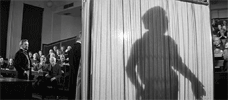
The Elephant Man
1980 -
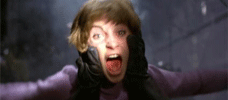
My Bloody Valentine
1981 -

Who Can Kill a Child?
1976 -

Cannibal Holocaust
1980 -

Let Sleeping Corpses Lie
1974 -

John Carpenter’s Vampires
1998 -

Jaws 2
1978 -

A Warning to the Curious
1972 -

Wolf
1994 -

The Survivor
1981 -
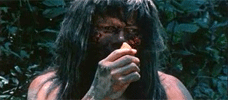
Cannibal Ferox
1981 -
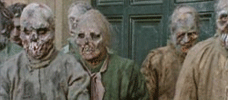
The Nights of Terror
1981 -
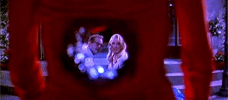
Death Becomes Her
1992 -

Alice, Sweet Alice
1976 -

Body Double
1984 -
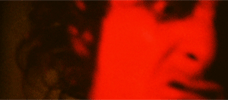
Invocation of My Demon Brother
1969 -
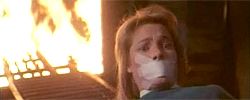
Phantasm II
1988 -

Emanuelle and the Last Cannibals
1977 -

The Wicker Man
1973 -
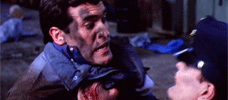
Maniac Cop
1988 -
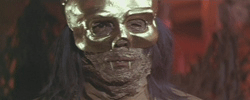
The Legend of the 7 Golden Vampires
1974 -
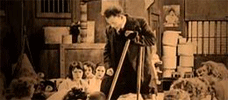
The Penalty
1920 -

Boxing Helena
1993 -

Chew on This
2005 -

Night of the Creeps
1986 -

Night of the Lepus
1972 -
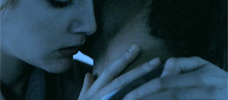
Near Dark
1987 -

Army of Darkness
1992 -

The Brood
1979 -

The Lift
1983 -

Amsterdamned
1988 -
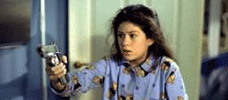
Silent Witness
1999 -

The Shaft
2001
We don’t do comments anymore, but you may contact us here or find us on Twitter or Facebook.



